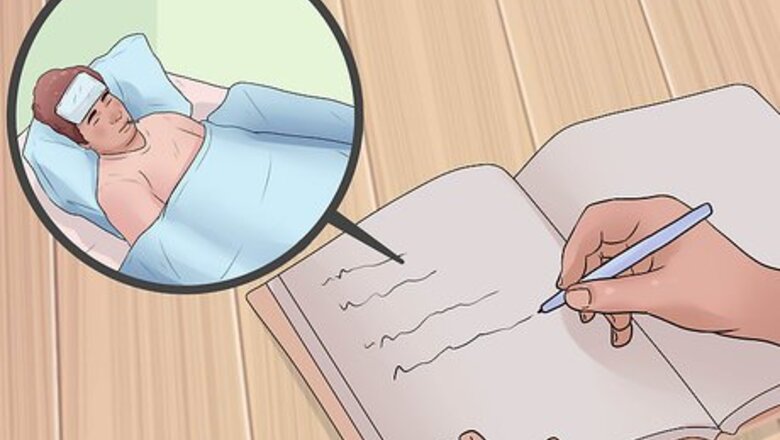
views
X
Research source
If you often develop hives due to stress, then you should see your doctor to get some help dealing with your condition. You will also need to identify your triggers and work to minimize them. To get rid of stress hives, there are lots of things you can do including reducing stress and soothing the hives.
Reducing Stress

Start a “Hives Diary.” You can use a “Hives Diary” to start keeping track of what tends to trigger your hives. To keep a “Hives Diary,” make an entry every time you have an outbreak of hives. Make sure that you include lots of details about how you are feeling and what has been going on. Some questions you might want to answer in your diary include: Are you cold? Are you hungry? Are you upset, angry, nervous, tense, or anxious? Do you have a chronic condition such as asthma, diabetes or an autoimmune disorder? Has anything happened that might make your chronic condition worse? What have you eaten?

Minimize your stressors. After a while of keeping your “Hives Diary,” you should be able to detect patterns in your hive outbreaks, such as breaking out more often when you are hungry. After you have identified your stressors, do what you can to minimize them. For example, if you notice that you tend to break out into hives more often when you are feeling hungry, then try to keep a snack on you at all times to stave off hunger.
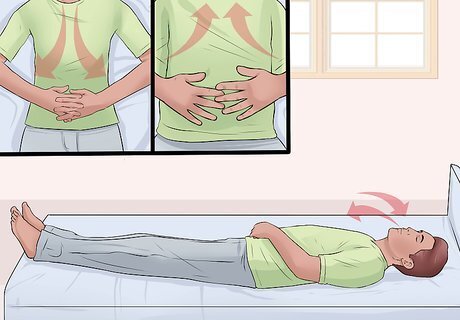
Perform deep breathing exercises. Breathing exercises can relax you, which may help get rid of stress hives. To use deep breathing, lay down or sit in a comfortable chair. Then, place your hands on your stomach with your fingers close together. Take in a long, slow deep breath and expand your belly as you breathe in. This ensures that you are using your diaphragm to breathe, which can stimulate your parasympathetic nervous system and help calm you. Your fingers should separate as they lie on your belly. Continue deep breathing for about 10 – 15 minutes. Repeat this exercise whenever you are feeling stressed.
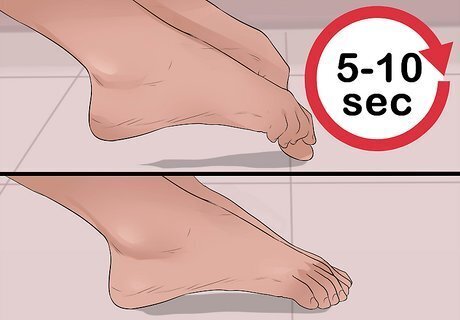
Try progressive muscle relaxation. Progressive muscle relaxation may help you to relax as well. This exercise requires you to tighten and release your muscles starting at your toes and moving to the top of your head. Start by tightening the muscles in your toes and holding them like that for five to 10 seconds. Then, relax your toes and move to your feet. Keep moving up your body through your legs, thighs, abdomen, arms, neck and face. Make sure that you relax your muscles slowly every time.
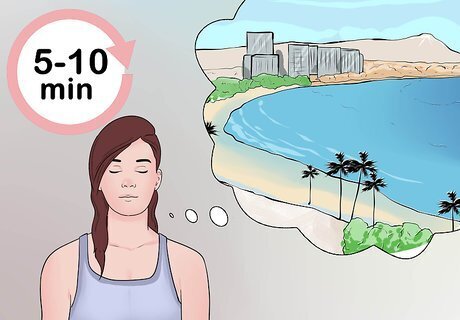
Use visualization. Visualization exercises can also help you relax. To use visualization, try to imagine a place that you like to go or imagine a serene setting, such as a beach or mountaintop. As you focus on your chosen place, try to focus on its sensory details. What color is the sky? What does it sound like? How does it smell? Is the temperature warm or cool? Keep the “picture” in your mind for as long as you can. Breathe deeply as you focus on the image. Try to focus on this image for about five to 10 minutes or longer if you can.

Practice positive affirmations. Using daily positive affirmations may also help you to relax and get rid of stress hives. You can say your positive affirmation or write them down on sticky notes and leave them around your house. Seeing them or saying them may help you to feel better and reduce stress levels. Some examples of positive affirmations include: “Yes, I can!” “I am successful!” “I feel better every day!”
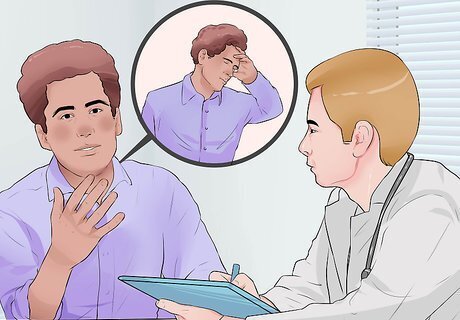
Seek help from a therapist. Talk therapy may help if stress is the main cause of your outbreaks. If stress is interfering with your daily life and causing regular hive outbreaks, then consider talking to a therapist. A therapist can help you to develop better strategies for dealing with stress, which may help reduce future stress hive outbreaks.
Consider other alternative treatments. There are tons of ways to treat stress. Exercise has been proven to help reduce stress. In addition, think about trying acupuncture, massage, meditation, tai chi, yoga, biofeedback, music, art therapy, or hypnosis. Coping with stress in your life should help you manage stress hives. Your diet may also contribute to stress hives. Try to limit yeast and food additives. Use supplements such as B12, vitamin C, vitamin D, fish oil and quercetin.
Soothing Hives
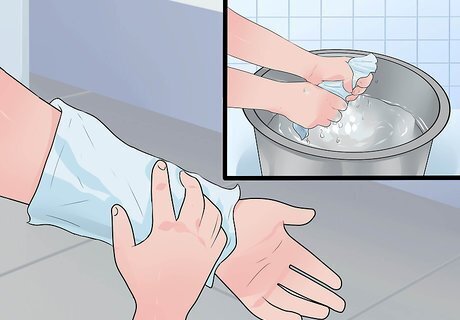
Use a cold compress. A cold compress can be an effective way to soothe and relieve stress hives. To make a compress, take a clean, cotton towel and soak it in cool — not ice cold — water. Then, squeeze out the extra water and place the compress over the affected areas. Avoid using very cold water because this can make the hives worse for some people. Use the compress for as long as you want.
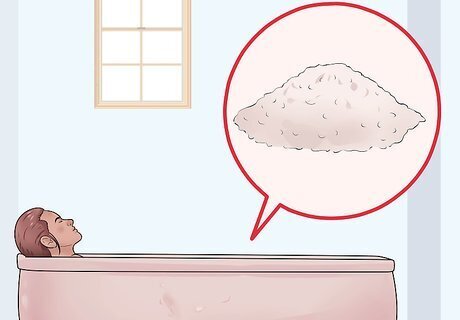
Take an oatmeal bath. An oatmeal bath may also help to soothe stress hives. To prepare an oatmeal bath, place a cup of rolled oats in a clean nylon knee-high sock. Then, pull the sock over the water tap so that the water runs through the oats as it enters the tub. Run cool water through the sock and soak in the oatmeal bath. Repeat as often as needed. You will probably need to hold the sock to keep it in place as the water runs through it.

Apply calamine lotion. Calamine lotion is a mixture of zinc oxide and zinc carbonate. You can apply this lotion to your hives to help relieve the itching as often as needed. Follow the package instructions for use. Rinse the calamine lotion off with cool water when you want to remove it.
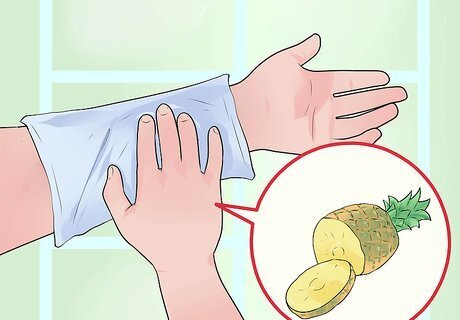
Make a pineapple compress. Bromelain is an enzyme found in pineapples and it can help reduce the swelling of hives. You can place pieces of fresh pineapple on the hives or place crushed pineapple on a thin cotton towel to use as a compress. If you are using crushed pineapple, then pull the four corners of the towel together and tie them off with a rubber band. Then, place the damp towel over the hives. Keep the pineapple in the refrigerator when you are not using it. Avoid taking bromelain before surgery or if you are on blood thinners as it may increase the risk of bleeding.
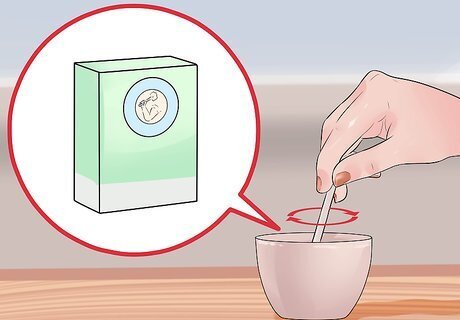
Mix up a cream of tartar or baking soda paste. Cream of tartar and baking soda may also help to get rid of stress hives. Mix one tablespoon of cream of tartar or baking soda with enough water to make a paste, then spread the paste over your hives. Use the paste as often as needed and rinse it off with cool water after it dries.
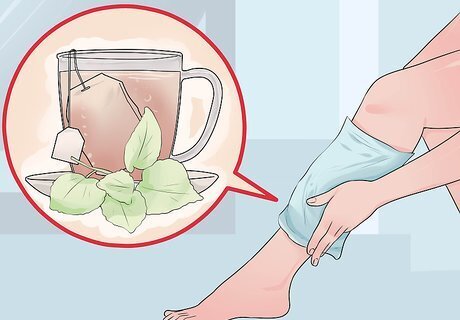
Pour cool nettle tea over your hives. Nettles have been used to treat hives for a long time. To use nettle tea for stress hives, make a cup of nettles tea by steeping one teaspoon of dried nettles in one cup of hot water for five to 10 minutes. Then allow the tea to cool down to room temperature and pour some over your hives. You can pour the nettles tea over your hives or soak a cotton towel with the nettles tea and then wring out the excess tea over the hives. You can also place the damp towel over the hives. Wear loose cotton clothing. Avoid wool which will irritate your stress hives and make itching worse. Do not use nettle tea if you have a known allergy to it. Some people develop hives after drinking this tea.
Getting Medical Help
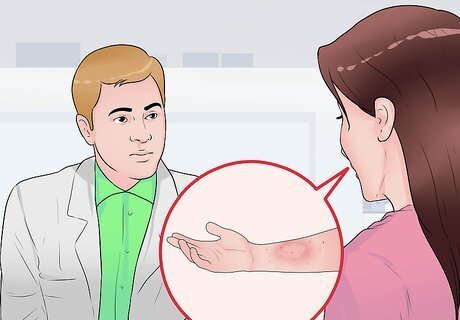
See your doctor about your hives. If you suffer from frequent outbreaks of stress hives, then you should see your doctor as soon as possible. Your doctor may be able to help you determine your triggers and help you develop strategies for preventing future outbreaks. Your medical provider may order some blood tests, allergy tests to rule out underlying reasons for your stress hives.
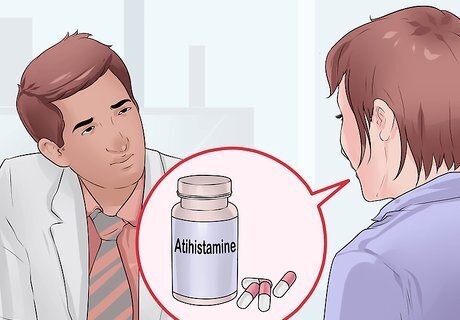
Talk to your doctor about taking antihistamines. Antihistamines may help if your hives are mild to moderate, but it is a good idea to check with your doctor first. Antihistamines are available as over-the-counter (OTC) medications or prescription antihistamines.
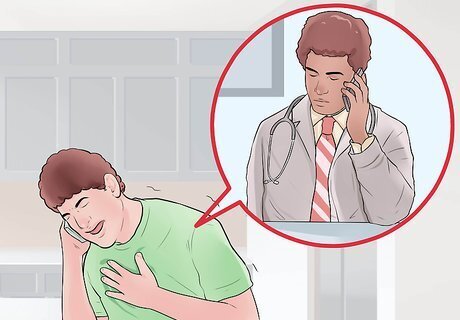
Know when to seek immediate medical attention. Stress hives should go away on their own, but call your doctor if they do not go away within 24 hours. If you are experiencing any of the following serious symptoms, you should seek immediate medical attention. Wheezing or trouble breathing Dizziness Swelling in your face, especially the tongue and lips Difficulty breathing or swallowing Pain or tightness in your chest
















Comments
0 comment